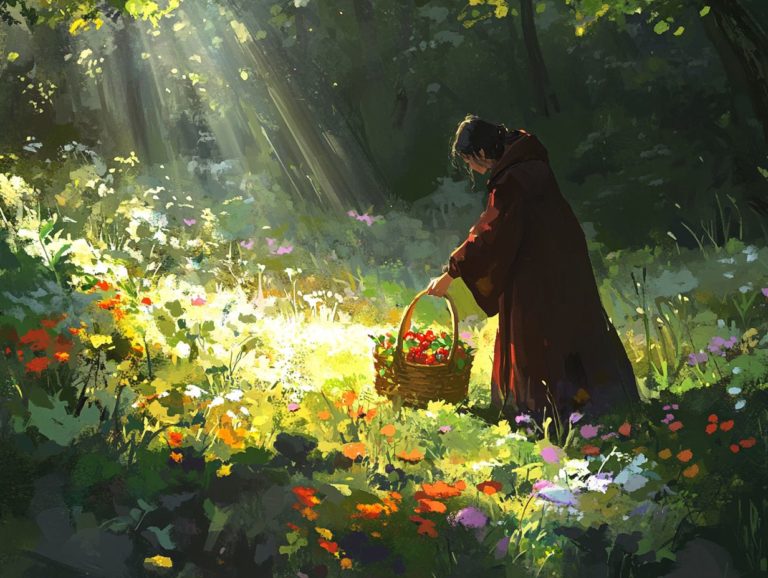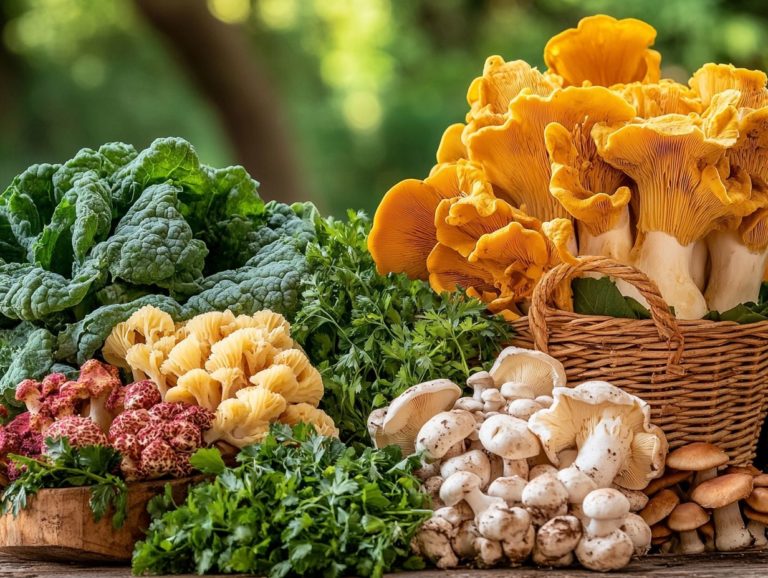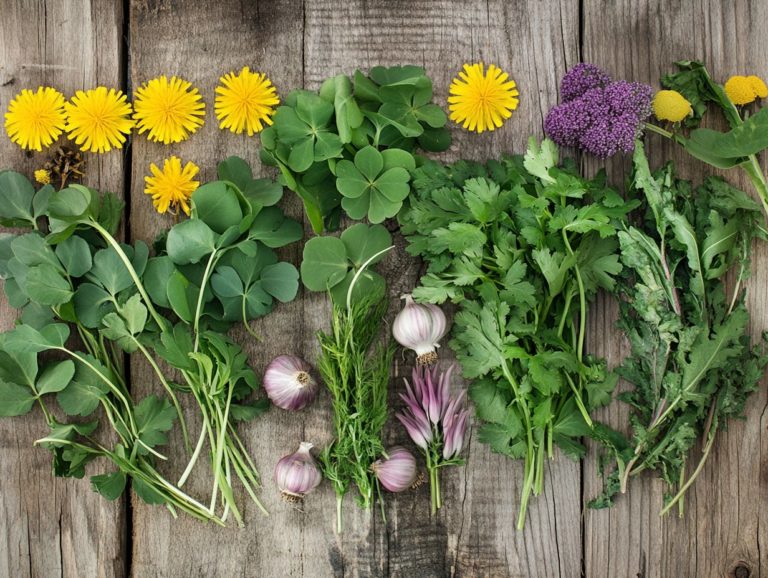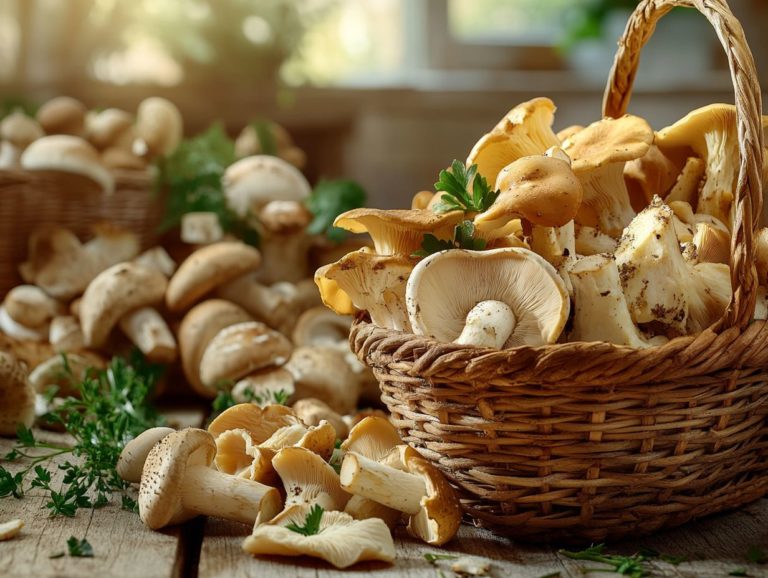5 Edible Plants for Beginners to Forage
Foraging for wild edibles is more than just a delightful adventure; it s a profound journey into nature that strengthens your connection to food and the environment. It offers abundant opportunities to explore wild food.
This article explores five beginner-friendly plants that you can easily find in the wild: dandelions, nettles, blackberries, wild garlic, and elderberries. You will also get tips on how to identify these plants and harvest wild food. The article highlights the benefits of foraging, outlines essential precautions, and shares sustainable practices.
You will learn how to safely incorporate these tasty finds into your meals.
Get ready to uncover the exciting world of foraging!
Contents
Key Takeaways:
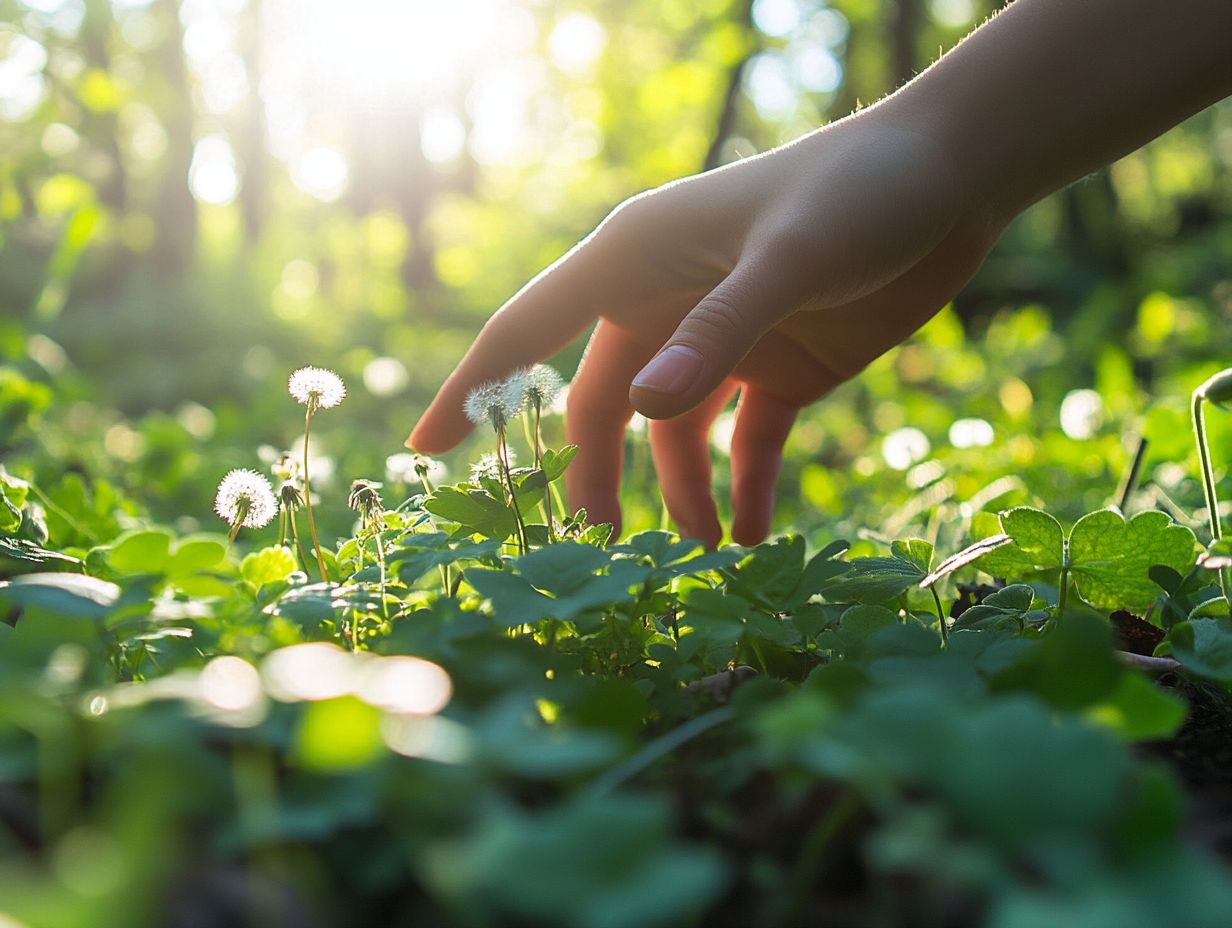
- Dandelions are a versatile and easily identifiable plant with health benefits due to their high vitamin and mineral content.
- Nettles may seem intimidating, but they are nutritious and delicious plants with many culinary uses, such as making pesto or tea, or adding them to hearty dishes.
- Elderberries are rich in antioxidants and can be used in recipes for jams, syrups, and wine, making them valuable for both food and medicine.
1. Dandelion
Dandelions are a nutritious plant, often found in gardens and meadows, making them an ideal choice for foraging. As one of the most recognizable edible plants, dandelions offer a wealth of culinary options while being rich in vitamins and minerals, especially vitamin C.
With their bright yellow flowers and jagged leaves, they not only add color to your plate but also serve as a sustainable food source during spring and summer.
You can easily incorporate dandelions into various dishes. The young leaves can replace traditional salad greens, while the blossoms can be brewed into delightful teas or made into fritters. Remarkably, the entire plant is edible from root to flower offering endless possibilities like crafting dandelion wine or brewing roasted root coffee.
When harvesting, techniques are key. Opt for young, tender leaves gathered in early spring, just before the flowers bloom. Always remember to forage safely, avoiding areas treated with pesticides or contaminants to ensure a healthy culinary adventure.
2. Nettles
Stinging nettles may not be on your radar, but they are a hidden gem a nutrient-rich plant that can be harvested safely when prepared with care. Recognizable by their serrated leaves and the prickly sensation they bring upon contact, these wild herbs are full of vitamins A, C, and K, making them a valuable addition to your foraging repertoire.
To unlock their culinary potential, you must master the right cooking techniques that neutralize their sting try blanching them in boiling water or saut ing in olive oil. Once prepared, nettles can be seamlessly added to various dishes, providing a subtle, earthy flavor similar to spinach.
Consider classic recipes like:
- Nettle soup, where saut ed onions meld beautifully with the nutritious greens.
- Nettle pesto, which offers a unique twist on traditional Italian dishes.
Beyond their delightful flavor, consuming nettles also brings a host of health benefits, including anti-inflammatory properties and a rich supply of iron. It s a perfect choice for anyone looking to combine flavor with wellness.
Start your foraging adventure today and discover what nature has to offer!
3. Blackberries
Blackberries are a tasty fruit that thrives in hedgerows and forests during the late summer months. They are a sought-after prize for foragers looking for nature s free fare, especially in autumn when they are at their sweetest.
Bursting with antioxidants, vitamins, and dietary fiber, these luscious berries will tantalize your taste buds and boost your overall health, providing a sweet taste of nature’s bounty.
The prime time for blackberry foraging runs from late July through early September, when the berries are at their absolute peak. A stroll through local parks or the countryside reveals sprawling patches of these gems, often hidden among thorny brambles, waiting for you to discover them.
To spot the ripest blackberries, keep an eye out for berries that are plump and a deep shade of purple or black; they should come away easily from the stem with a gentle tug.
Once you’ve gathered these delightful fruits, they can elevate a range of meals from invigorating breakfast smoothies to decadent desserts. You can even preserve their vibrant flavor through jams or jellies, allowing you to savor them long after the season has slipped away.
Safety should always be at the forefront. Ensure the areas you forage are free from pesticides and avoid roadsides or industrial sites to guarantee a truly healthy harvest.
Get outside and start foraging for blackberries today!
4. Wild Garlic
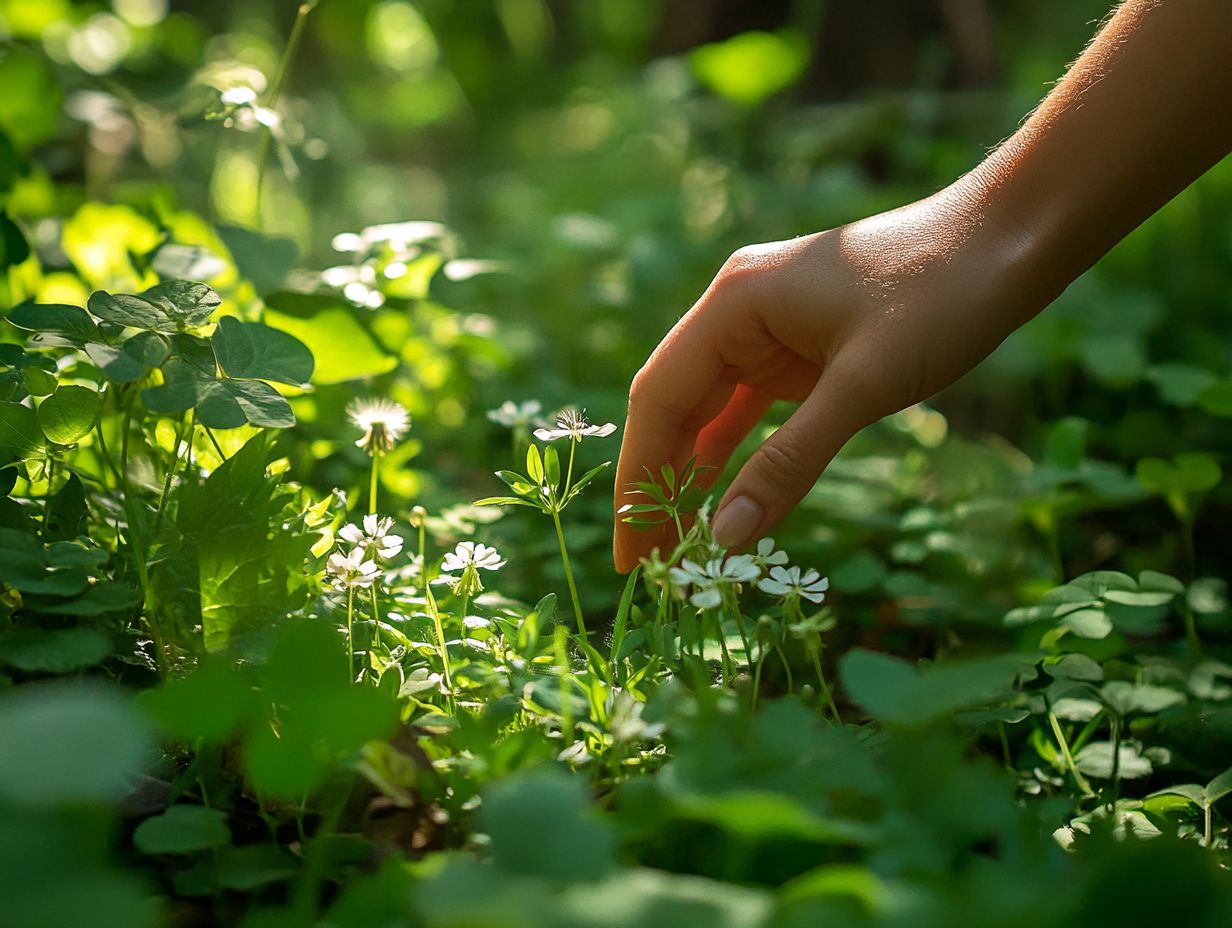
Wild garlic, with its distinctive aroma and flavor, thrives in damp woodlands and along riverbanks during the spring months. This edible wonder is celebrated for its health benefits, including potential support for heart health and a boost to your immune system.
Identifying this green treasure is easy. Look for its broad, lance-shaped leaves, which may remind you of lily of the valley, but release a delightful garlic scent when crushed. That unmistakable aroma is your best clue that you’ve found wild garlic.
In the kitchen, you can blend it into pesto, incorporate it into soups, or toss it into salads for an added flavor kick. Packed with nutrients like vitamins A and C, along with antioxidants that help protect your cells from damage, it’s no surprise that foragers are eager to include this vibrant plant in their diets.
When harvesting, keep sustainability in mind. Take only a few leaves from each plant to ensure its growth and availability for others.
Explore the woods and add wild garlic to your foraging adventures!
5. Elderberries
Elderberries are charming little dark fruits that grow in clusters on elder trees. They typically thrive in moist, fertile areas and can be transformed into delicious elderflower cordial. Foragers adore them not just for their rich flavor but also for their impressive health benefits. Packed with antioxidants and immune-boosting properties, these berries are a perfect natural ally during autumn.
However, when foraging, tread carefully. The elderberry’s appearance can be deceiving, and distinguishing these gems from their toxic relatives like the death cap mushroom or other poisonous berries is crucial. Look for clustered growth on distinct purple-black stems; toxic look-alikes usually flaunt different foliage or fruit arrangements.
Once you ve confidently identified elderberries, the culinary possibilities are delightful. You can whip up a refreshing elderberry cordial by combining the berries with sugar and water, creating a sweet, syrupy drink that s sure to impress. To make the most of your harvest, learn food preservation methods, like freezing or making jams, which can significantly extend their shelf life, letting you savor their goodness long after the harvest season has passed.
Head out and start foraging for elderberries today!
What Are the Benefits of Foraging for Edible Plants?
Foraging for edible plants offers many benefits. You can enhance your health, save money, and connect with nature while embracing sustainable living by discovering 5 unique wild edibles you can find.
When you engage in foraging, you gain access to seasonal produce and free food. But it s so much more than that.
You ll learn about local flora and sharpen your survival skills. This will enrich your diet with fresh, natural ingredients directly from the earth.
Foraging boosts your vitamin intake. Wild foods often offer more nutrients than commercially farmed options.
They are brimming with essential nutrients and antioxidants that support your overall health.
This adventure into nature also nurtures a sense of responsibility toward the environment. It underscores the importance of sustainable practices in your harvesting activities.
Through mindful foraging, you cultivate a profound appreciation for the variety of plants and animals and the health of ecosystems.
Discovering local edible plants is thrilling! You’ll feel a sense of adventure and community as you share your experiences with fellow foragers who are also interested in spring foraging and easy edibles for beginners.
This fosters a collective passion for nature s treasures while mastering safe and responsible gathering techniques.
What Are the Precautions to Take When Foraging?
Practicing foraging safety is essential for you to ensure a positive and healthy wild food gathering experience. Familiarizing yourself with resources like 5 edible wild greens to look for can help, as some plants can be toxic or harmful if they’re not correctly identified.
Learn to identify plants early your safety depends on it! Knowing which plants are safe to eat protects you from harmful species.
To prevent any unfortunate mishaps, it s crucial that you educate yourself on plant identification.
Keeping a detailed journal for your foraging notes can significantly enhance your understanding of local flora. This will allow you to document your experiences and identify growth patterns.
Investing time in foraging classes will not only help you develop practical skills but also build your confidence in recognizing plants.
It s wise to utilize reliable resources, such as field guides or reputable apps, that offer in-depth information about plant characteristics.
By thoroughly understanding your local environment and being able to recognize potentially harmful species, you can engage in this rewarding activity with both enthusiasm and caution.
How Can One Identify Edible Plants in the Wild?
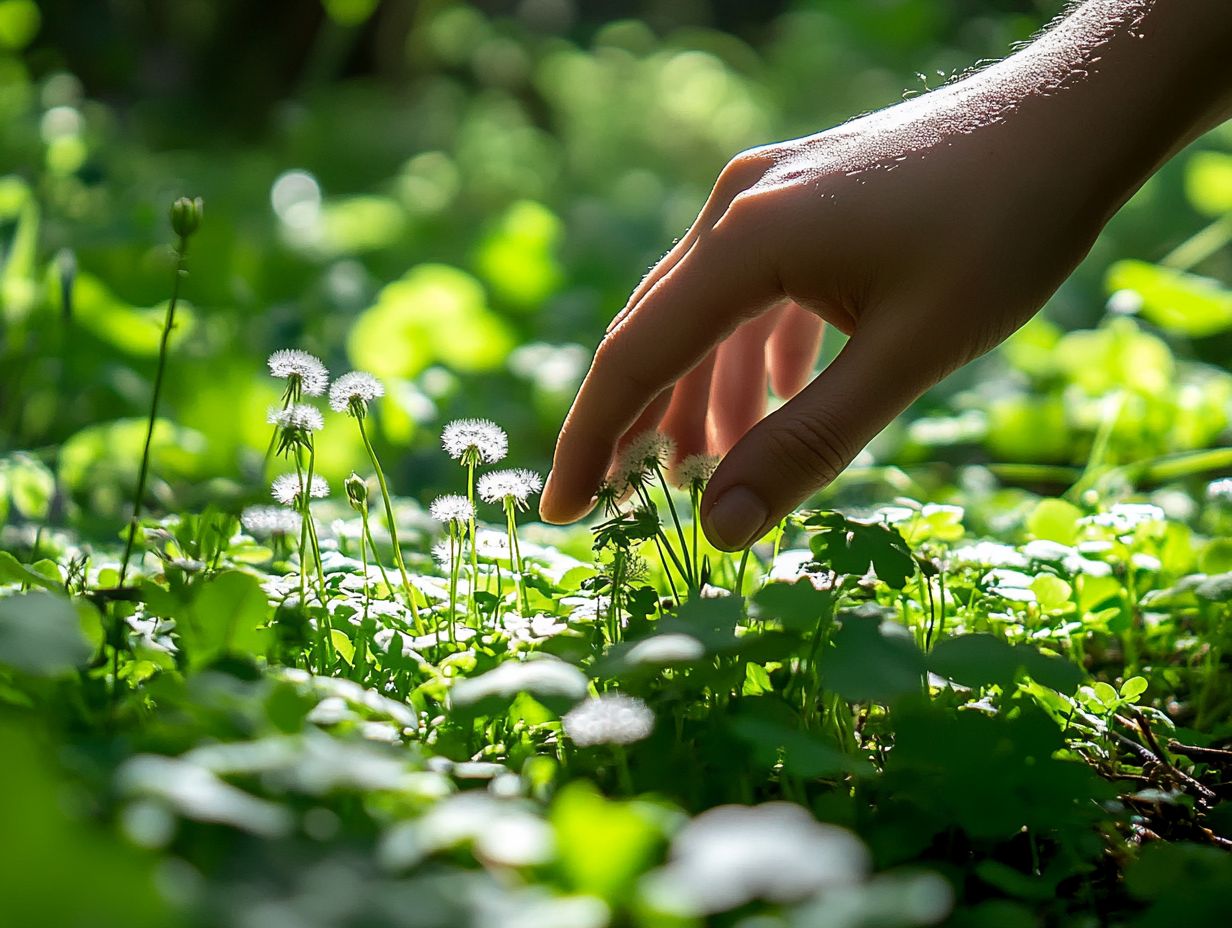
Successfully identifying edible plants to find in woodlands is a vital skill for you as a forager. This grants you the ability to relish nature’s offerings while steering clear of harmful species.
Use a reliable foraging guide to kickstart your journey, such as learning about 5 edible plants to know for survival, combined with hands-on experience and research on local flora. This will significantly enhance your ability to distinguish between what’s edible and what’s not.
Along with consulting guides, take the time to examine key characteristics like leaf shape, flower patterns, and growth habits.
By closely observing these features, you ll gain valuable insights into a plant’s identity, boosting your confidence in your selections.
Leveraging plant identification apps can serve as a practical tool, providing on-the-spot verification through image scanning.
Joining local foraging communities can further enrich your experience, as you share knowledge and learn from others.
Engaging with fellow foragers creates a supportive environment that deepens your understanding and enhances your overall learning journey.
What Are Some Tips for Sustainable Foraging?
Sustainable foraging is essential for preserving natural ecosystems and ensuring that wild food resources stay available for future generations. It promotes a respectful and responsible approach to harvesting edible plants.
By following key foraging tips and adopting careful picking methods, you can enjoy the bounty of nature while minimizing your impact on the environment.
Understanding the principles of sustainable foraging invites you to embrace a philosophy that values the health of our ecosystems over personal gain. It encourages taking only what you need, helping to prevent the depletion of plant populations.
Respecting local regulations is also important, as they often support conservation efforts aimed at protecting vulnerable species. By improving your identification skills, you can confidently gather the right plants while avoiding those that are endangered or protected.
This mindful approach not only protects biodiversity but also deepens your understanding of the intricate web of life in your local habitats, enriching your appreciation for the natural world.
How Can One Incorporate Foraged Foods into Their Diet?
Discover the delicious world of wild foods! Incorporating foraged foods into your diet opens the door to a delightful exploration of new flavors while enjoying the nutritional benefits of wild plants, enhancing your meals and overall wellness.
Embrace the variety of edible plants available in nature from dandelions to blackberries and craft unique herbal recipes that celebrate seasonal produce.
Integrating these ingredients into your meals can be both simple and exhilarating. Imagine adding fresh dandelion greens to a vibrant salad for a peppery kick or blending wild garlic into homemade pesto for a seasonal twist!
Seasonal produce truly shines when paired with foraged items. Consider roasting root vegetables and tossing them with saut ed chickweed for a wonderfully earthy side dish.
Cooking with wild herbs isn’t daunting; even a humble soup can be transformed by simmering a bouquet of foraged leaves like nettles and lamb’s quarters. To enhance your foraging skills, check out the top 5 foraging techniques for beginners and bring the excitement of the outdoors right to your plate!
What Are Some Common Misconceptions About Foraging?
Common misconceptions about foraging might hold you back from discovering the vibrant world of wild food. Myths like the idea that all wild plants are unsafe or that foraging is too complicated can lead to unnecessary fear.
By understanding the facts, you can cultivate confidence and curiosity. Many wild plants are safe to eat and packed with nutrients that can enhance your diet, making resources like wild edible plants: a beginner’s guide incredibly valuable.
If you’re interested in venturing into foraging, a wealth of resources is available books, workshops, and online communities that offer valuable insights and support as you navigate this fascinating landscape.
With the right guidance, you can embrace this rewarding hobby, deepening your connection to nature while learning to identify and responsibly harvest wild plants to forage this winter that thrive around you.
Frequently Asked Questions
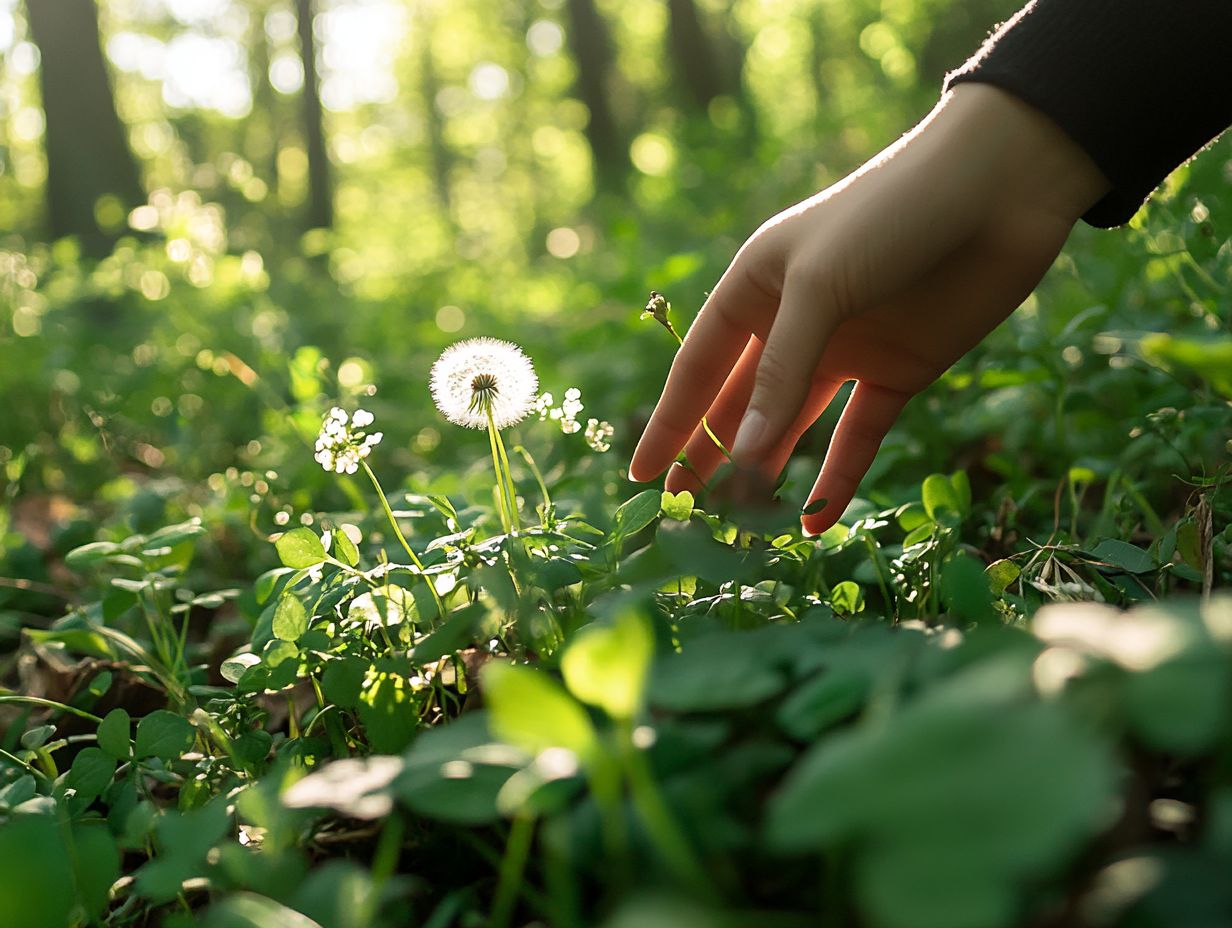
What are 5 edible plants for beginners to forage?
The top 5 wild edibles for beginners to forage are dandelion, wild garlic, elderberry, blackberries, and cattails.
Why are these 5 plants suitable for beginners to forage?
These plants are easy to identify, commonly found in many areas, and have minimal risk of being confused with poisonous plants.
How can I identify dandelion?
Dandelion has bright yellow flowers and jagged leaves used in salads. It also has a hollow stem and a thick taproot.
What are some ways to use wild garlic?
Use wild garlic in salads or soups as a garlic substitute. You can also make pesto or infuse it in oil.
Are elderberries safe to eat?
Yes, elderberries are safe to eat when fully ripe and cooked. However, it is important to identify them properly, as there are similar-looking poisonous plants.
Ready to explore the wild? Grab your basket and let s go foraging!
How can I incorporate cattails into my diet?
Cattails are versatile and can be eaten in many ways. You can add young shoots to your salads or use the yellow powder from cattails to bake.
The roots can be cooked like potatoes. You can also dry and grind the shoots and roots into a powder for future meals.

